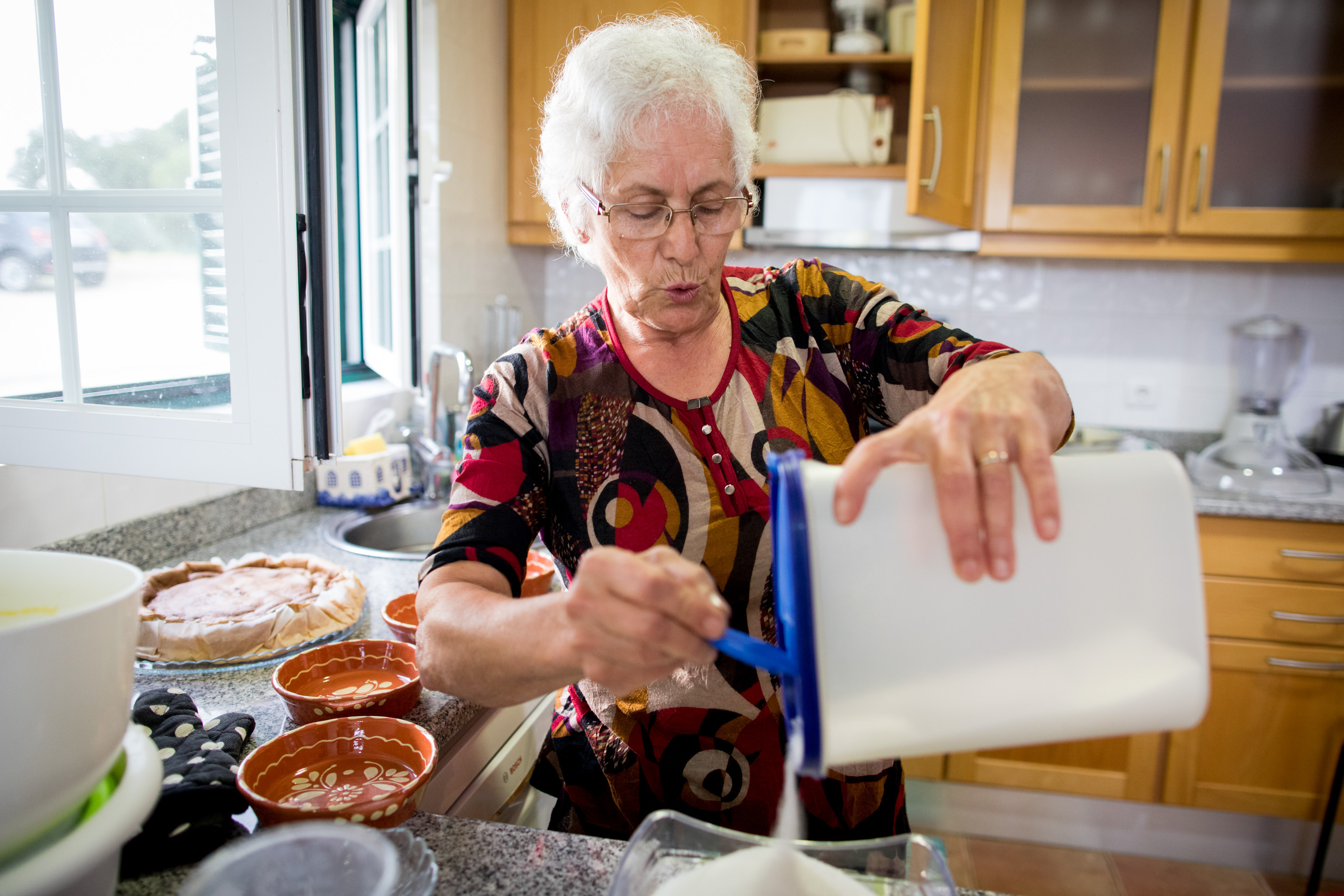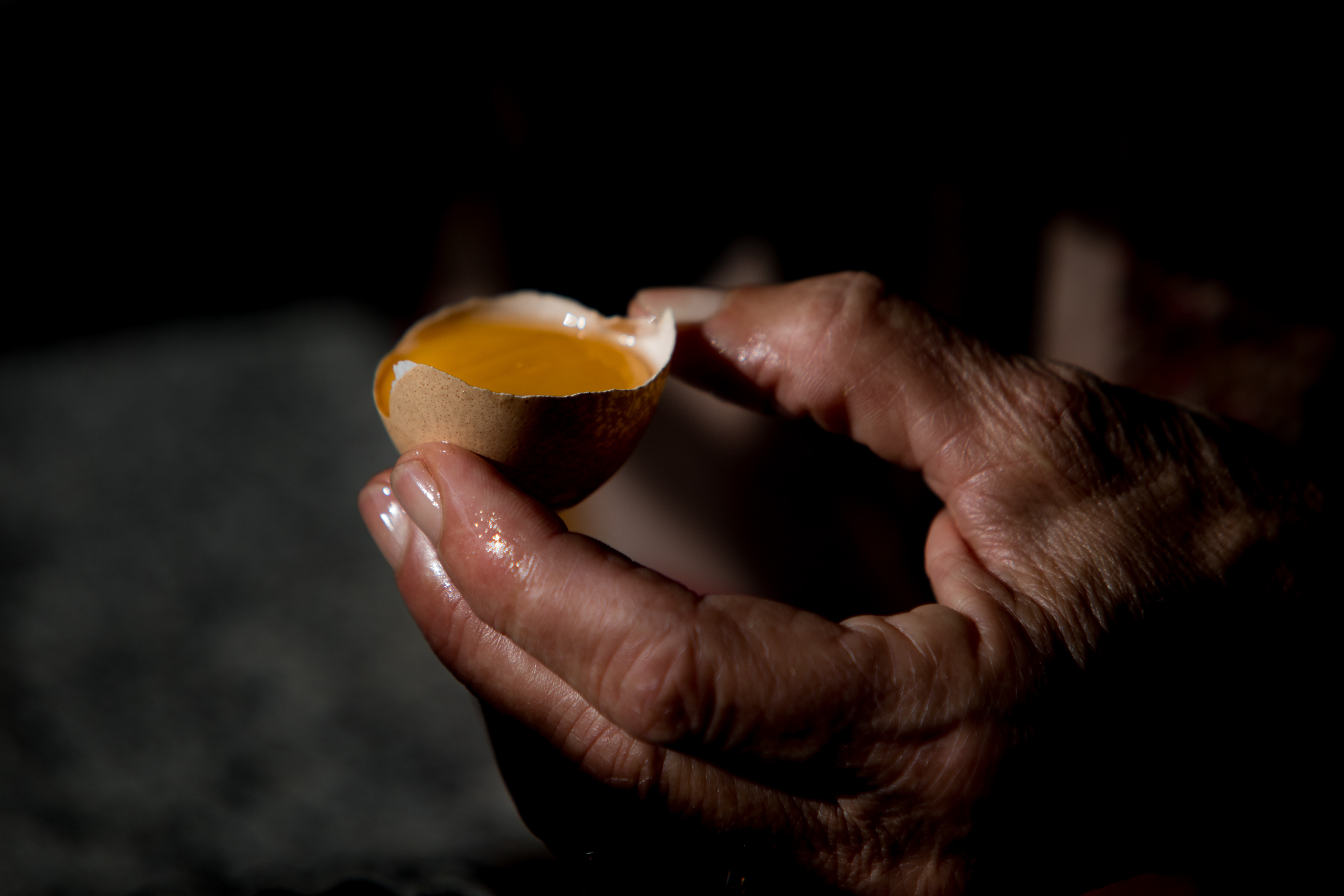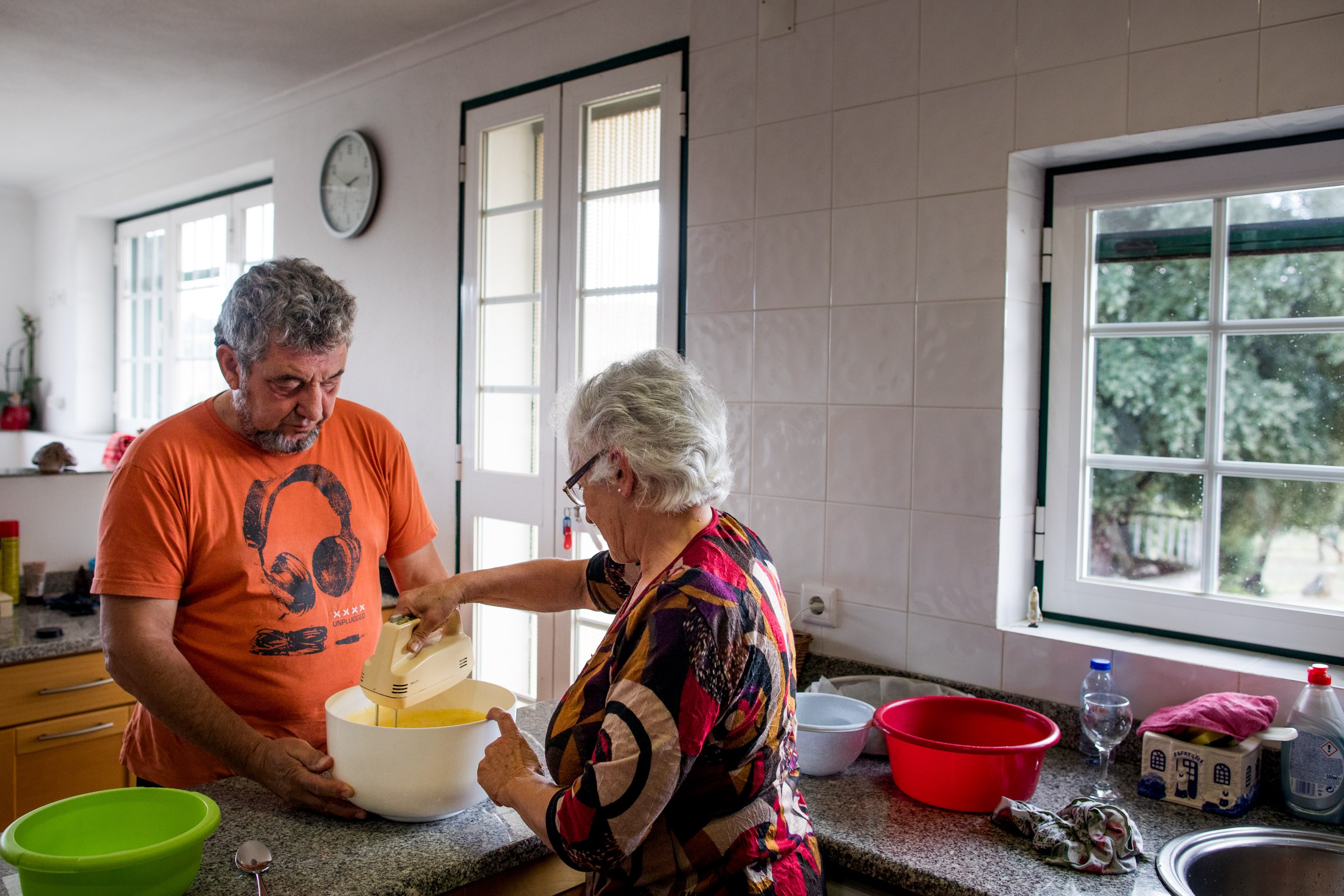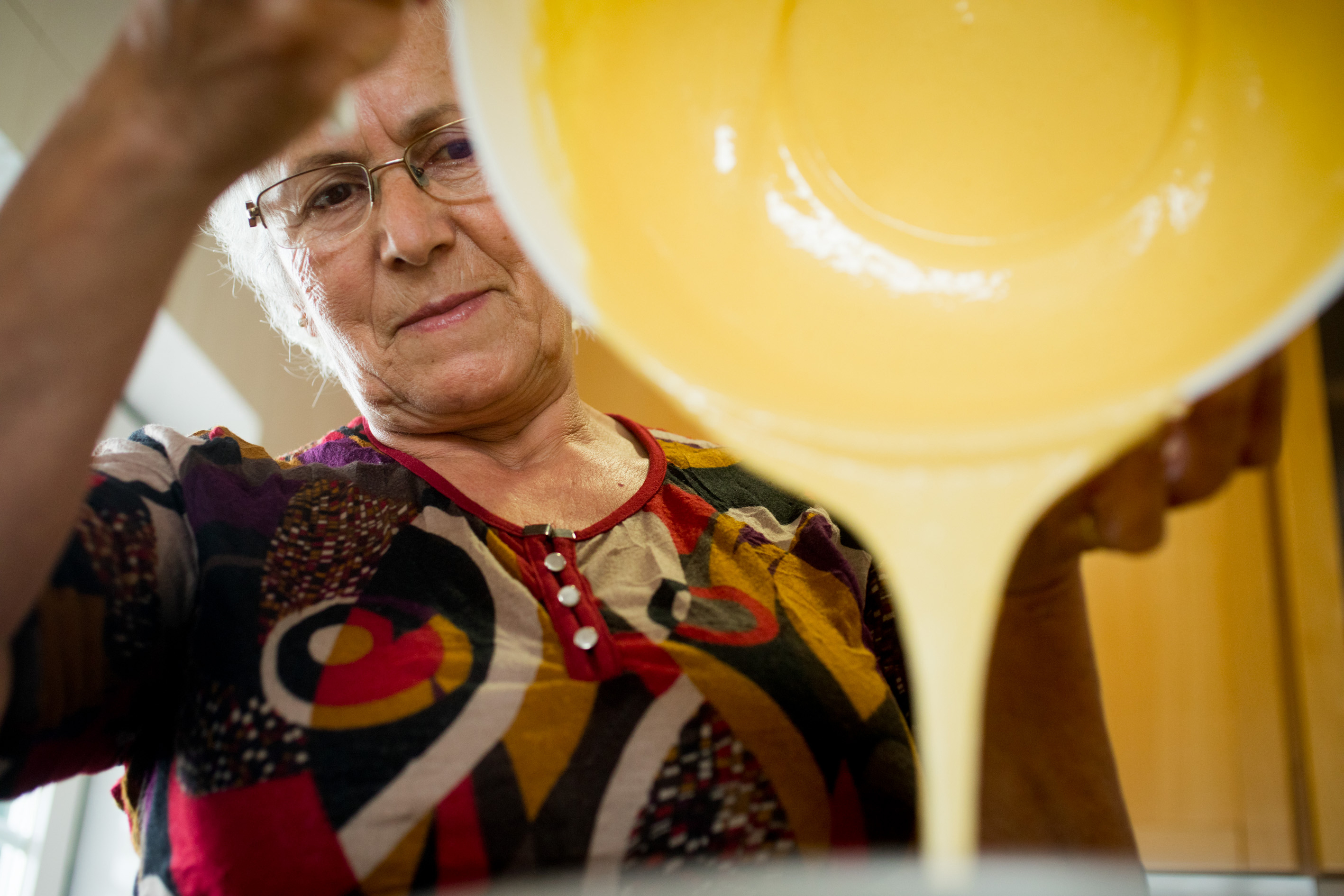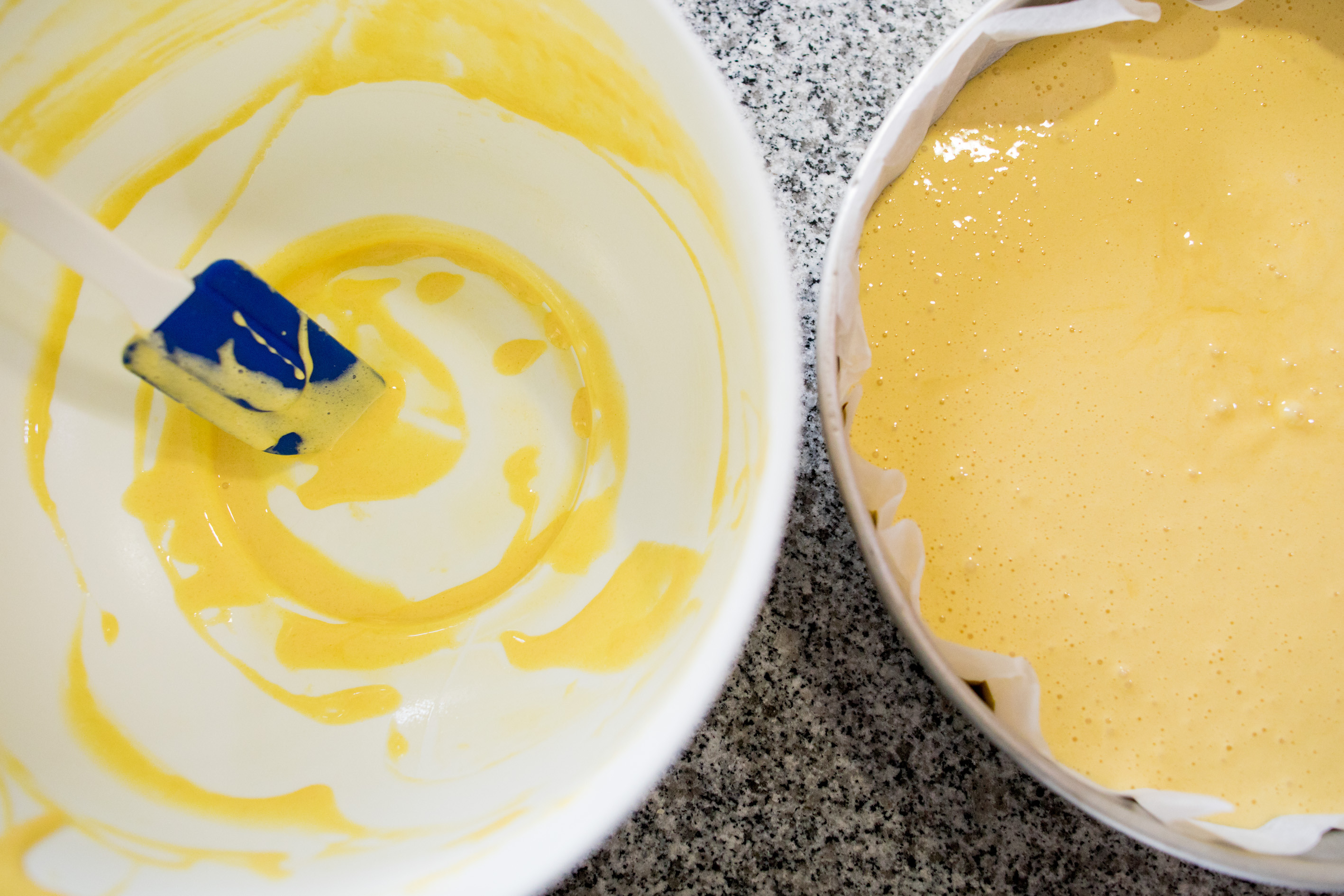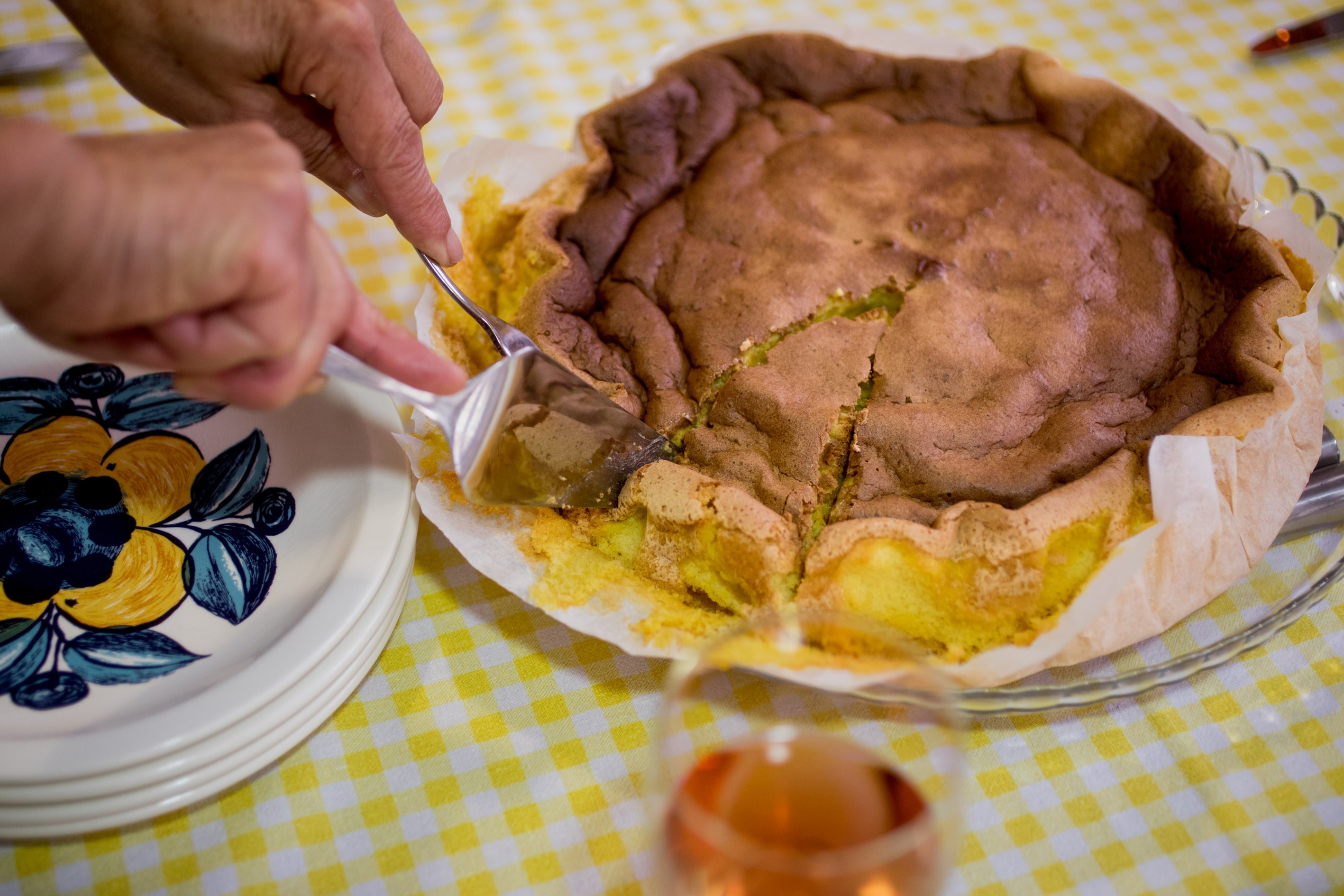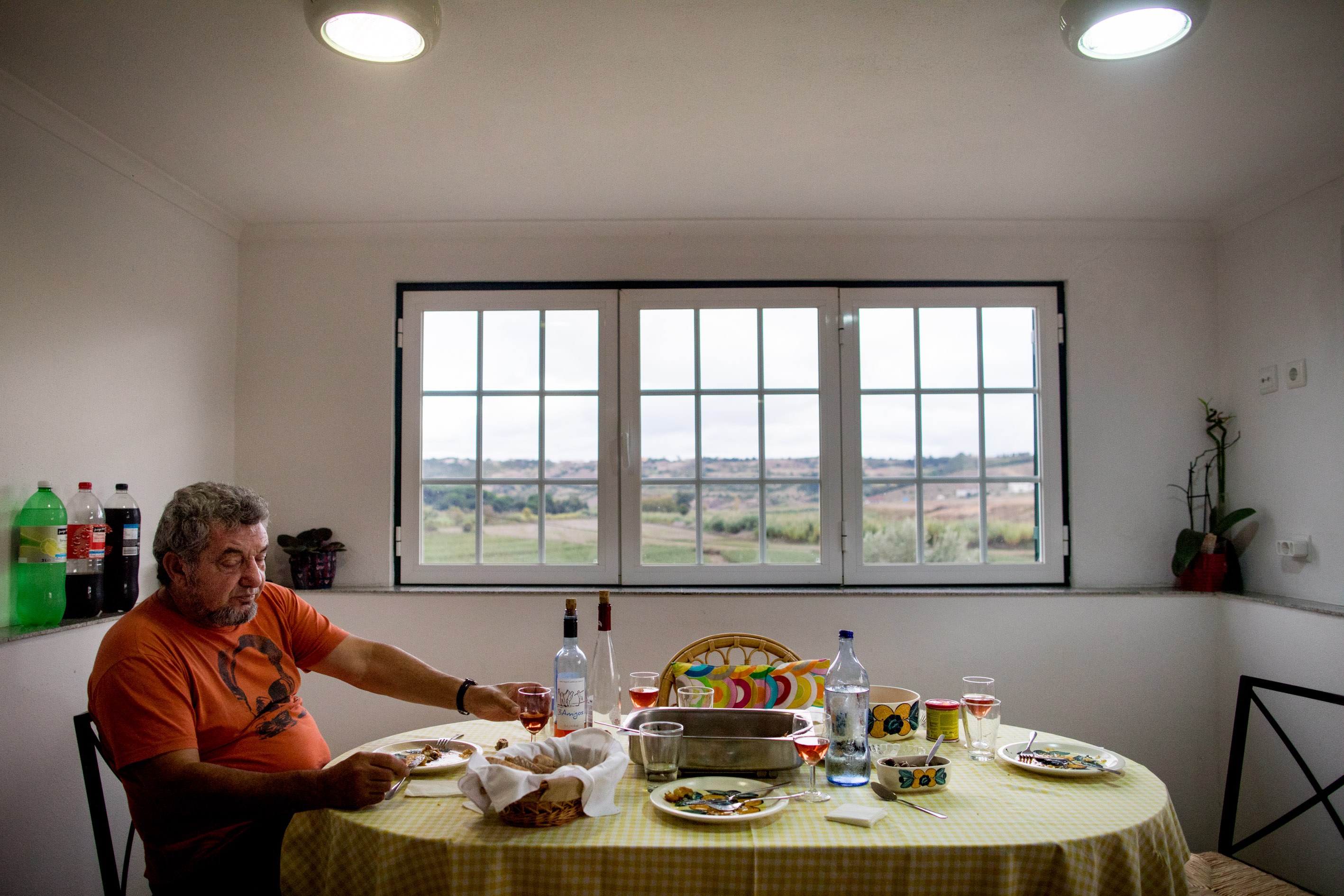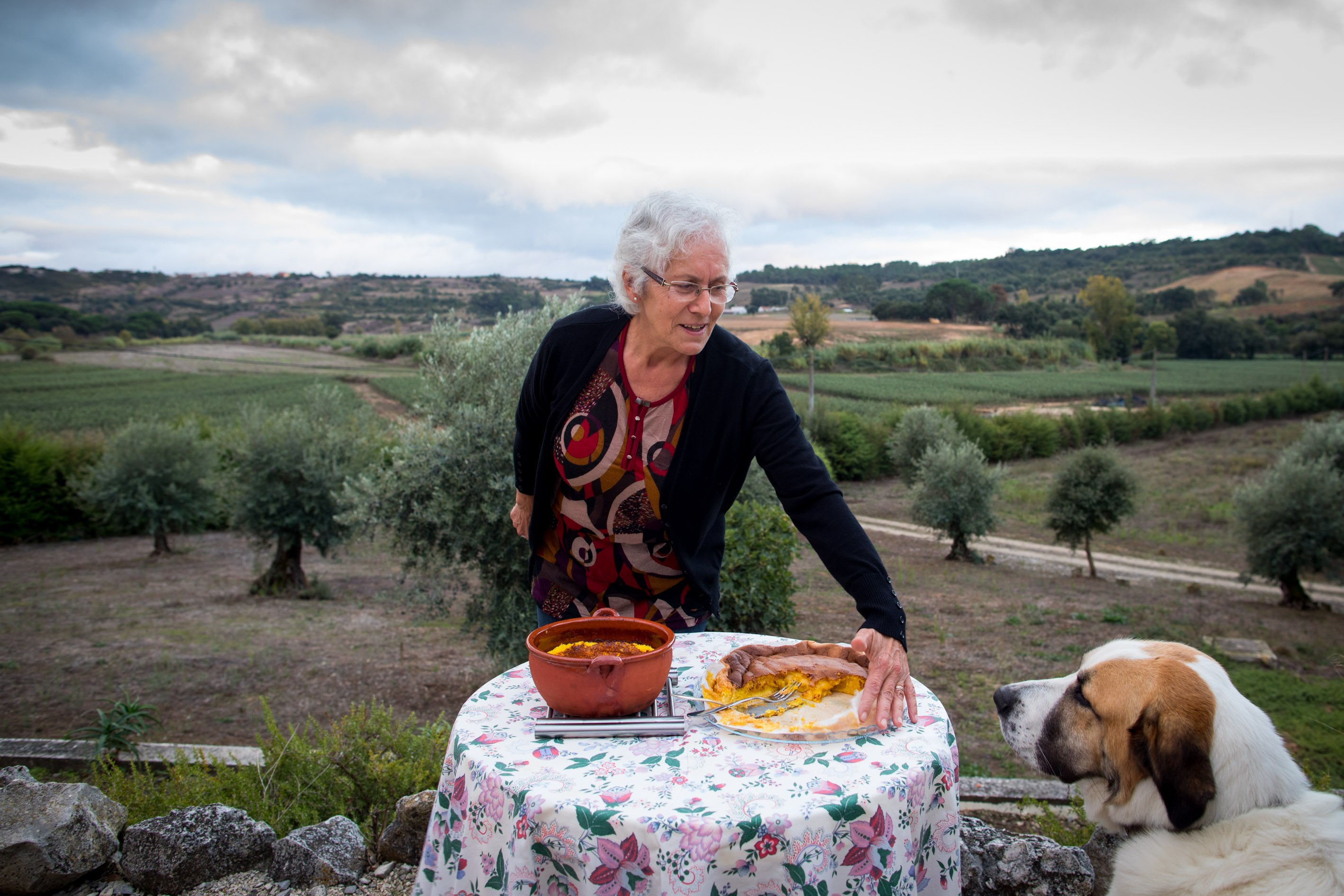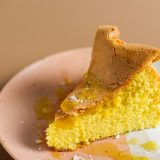As chickens cluck outside her home, Lourdes Varelia cracks on the countertop the pink spotted eggs they produce, separating whites from golden yolks. I’m here to learn about pão de ló, a wrinkled, eggy sponge cake with a gooey center. And as I watch each Technicolor yolk plop into the bowl, I can’t help but also think of all the golden pastries I’d seen an hour south in Lisbon.
When it comes to Portuguese desserts, the egg is king—something that would be plainly obvious to anyone passing the piles of yellow heaped in every bakery’s window: marigold muffin-like rice cakes enriched with yolk; soft brioche buns stuffed with golden cream; and, of course, the famous pastel de nata, an egg custard baked into a flaky shell.
The tradition of eggy confections dates back to medieval convents, where nuns used egg whites to starch their habits and for an old-school method of filtering wine. Surplus yolks were mixed with sugar as a preservative, which in time evolved into multiple “convent sweets.” The first also was the simplest—léria, a sweetened yolk wrapped in a softened communion wafer.
Pão de ló is a bit more complicated, but not by much, since it usually has just four ingredients: sugar, flour, baking powder and plenty of eggs. Techniques vary by region and family, with some cooking the cake completely through, others leaving the center so runny it must be eaten with a spoon. Varelia’s would fall somewhere in the middle. I had found her through a friend, a Lisbon resident who heard about “the mom with the best pão de ló.” Flattered, she invited us for a taste at her home in the rolling countryside near Rio Maior. As we arrive, we park next to cork trees recently stripped of their bark, and her two dogs run out to greet us.
Inside, Varelia already has weighed 10 eggs in the shell, an equal amount of sugar by weight and half that amount of flour.
Her recipe is adapted from her mother’s, which she remembers being too dry. “It’s better this way,” she says, modest but certain. “All the family says that mine is better.”
After separating the eggs, she adds a tablespoon of sugar to the whites and beats them with an electric hand mixer until they quadruple in volume. Instead of stiff peaks, she’s going for “claras en castelo,” or whites in castle. The yolks are beaten separately until large bubbles appear, another five minutes, then she combines the two.
“If the cake doesn’t fall, that means it spent too much (time) in the oven.”
The flour, spiked with baking powder, is added slowly and the batter is blended for another five minutes. She spreads the rest of the sugar in an even layer over the batter, then mixes again. More bubbles form, the most important indicator. “Like with bread, it was the same thing,” she says. “Our grandmothers always knew that it was well mixed by looking at the bubbles.”
Varelia scrapes the batter into a huge, parchment-lined pan with a rubber spatula, which she calls a “Salazar,” referring to Portugal’s 20th-century dictator who scraped every bit out of the government, until nothing was left. I take turns with Varelia’s husband, Zeca, dragging a finger in the bowl to lick off the remnants of eggy batter.
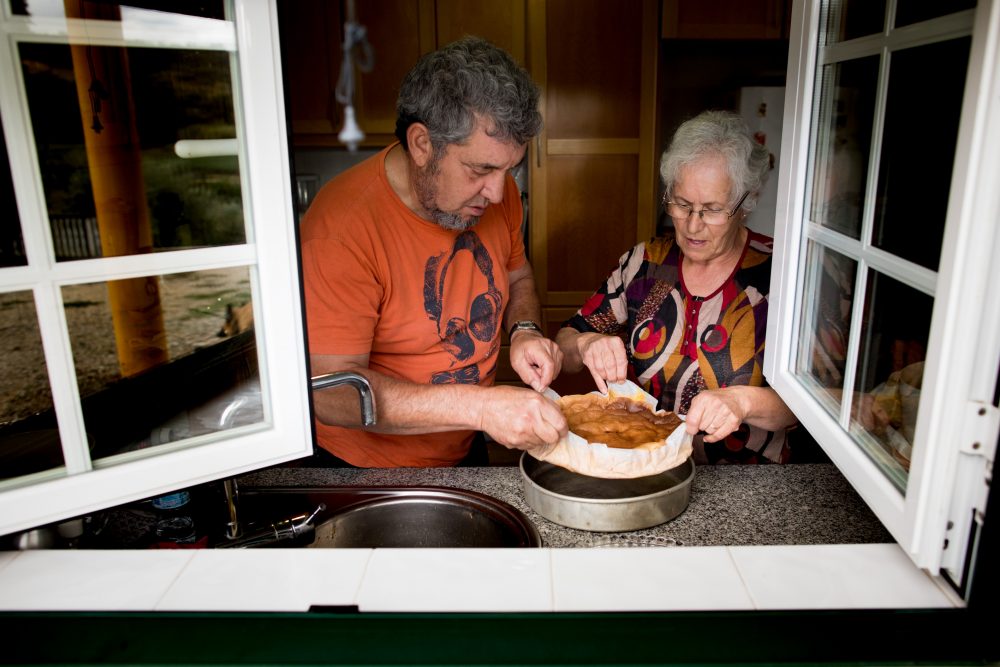
Pão de ló emerges from the oven airy and puffed up, but then deflates as it cools, wrinkling as it collapses and shrinks away from the sides of the pan.
The pan goes in the oven at 400°F until a golden-brown crust forms on top, then Varelia lowers the temperature to just-cook the interior. We set the table for lunch— tomato-onion salad, olives, blood sausage with pineapple, roasted salt cod swimming in olive oil—as the kitchen fills with sugary aroma.
When she pulls the cake from the oven, it’s puffed above the baking tin, looking on the outside like any other. But with time it deflates like a week-old party balloon, wrinkling as it collapses and shrinking away from the sides. “You want it to fall,” Varelia says. “If the cake doesn’t fall, that means it spent too much (time) in the oven.”
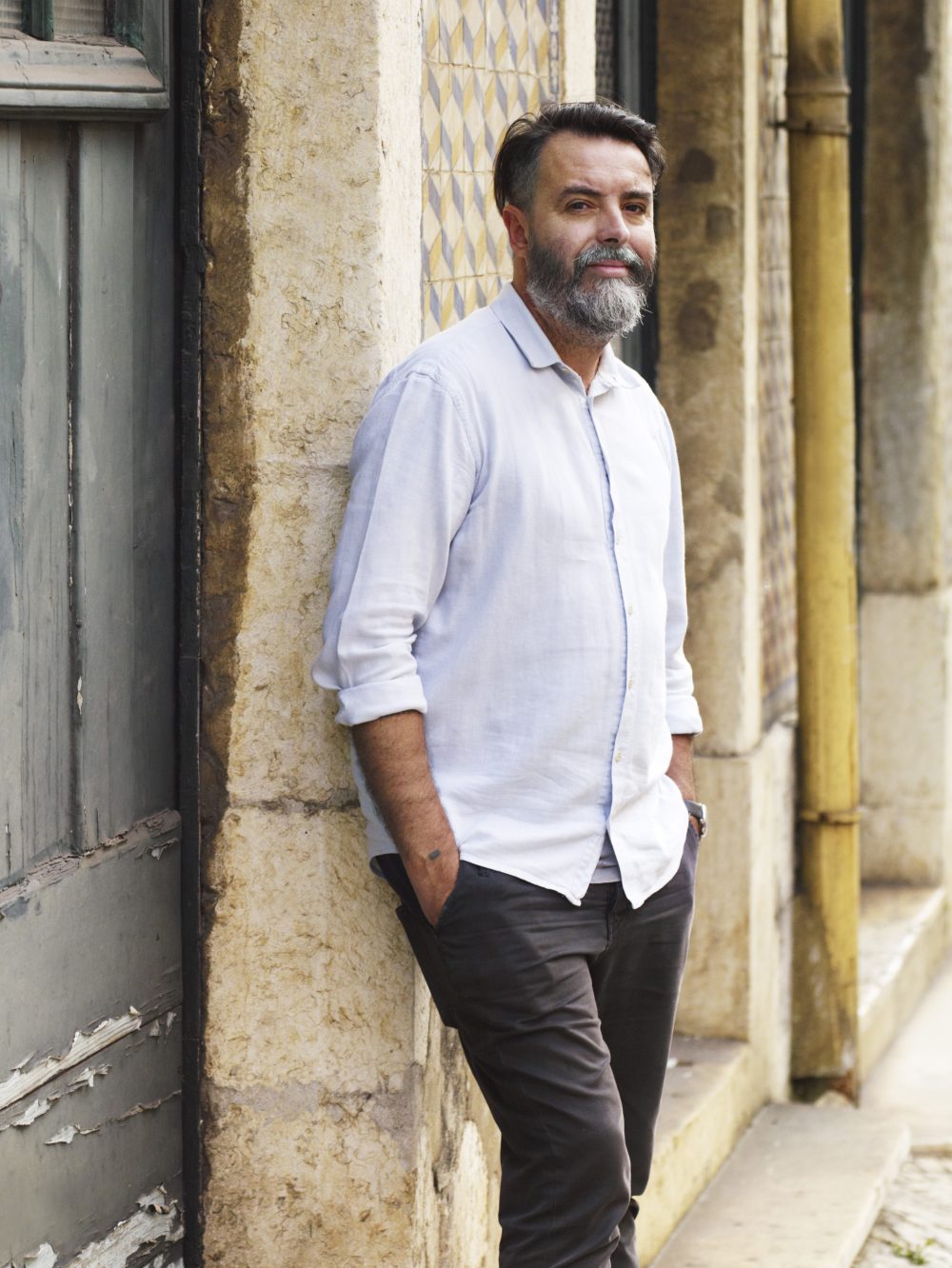
Nuno Mendes
Listen now on Milk Street Radio.
Inside, the cake is unlike any other. The center is more than just moist. It’s a gooey, cakey custard, resembling scrambled eggs surrounded by chewy edges that stick to my teeth. Pleasing bits of undissolved sugar leave a distinctive crunch. It’s spectacular, rich without being heavy. I wonder aloud how only four ingredients can produce such an amazing dessert.
But when we tried to recreate Varelia’s cake, we ran into trouble. Our first try came out dense, and switching to cake flour to lighten it resulted in a center that felt uncooked rather than custardy. More time in the oven made it dry.
Stymied, we turned to Nuno Mendes, a Lisbon-born chef now based in London, and he helped us see what went wrong: The eggs and flour in Portugal behave differently from what’s available in standard British and American supermarkets. “People say eggs are eggs, but that’s really not true,” says Mendes. “If they’re from the chickens this morning running around over there, they’re better-quality eggs for a better-quality dessert.”
Given that few of us are lucky enough to get farm-fresh eggs daily, we knew we needed something else, and Mendes had the solution. The recipe for pão de ló in his book, “My Lisbon,” includes an ingredient that most families’ recipes don’t: olive oil. Mixing a bit into the batter keeps the crumb moist as the cake bakes long enough for the center to set but remain creamy. Another drizzle of oil over the wrinkled, golden crust provides a balancing bitterness. A sprinkle of flaky sea salt adds a little crunch and offsets the sugar.
Sure enough, the olive oil did the trick, along with a stand mixer and a quick change to the mixing method. The cake came out supremely moist and unctuous, just custardy enough to meet even Varelia’s exacting standards. We could almost hear the chickens clucking in the yard.
More from Varelia
